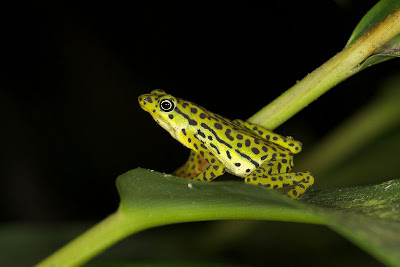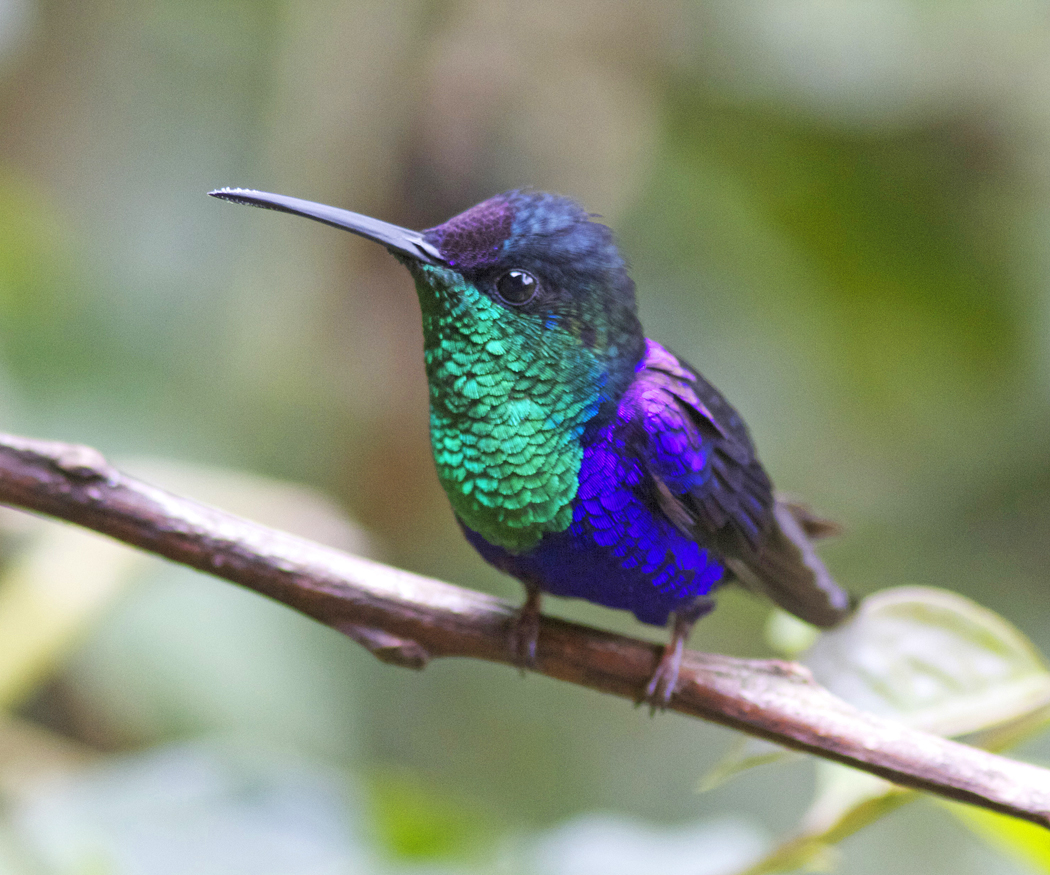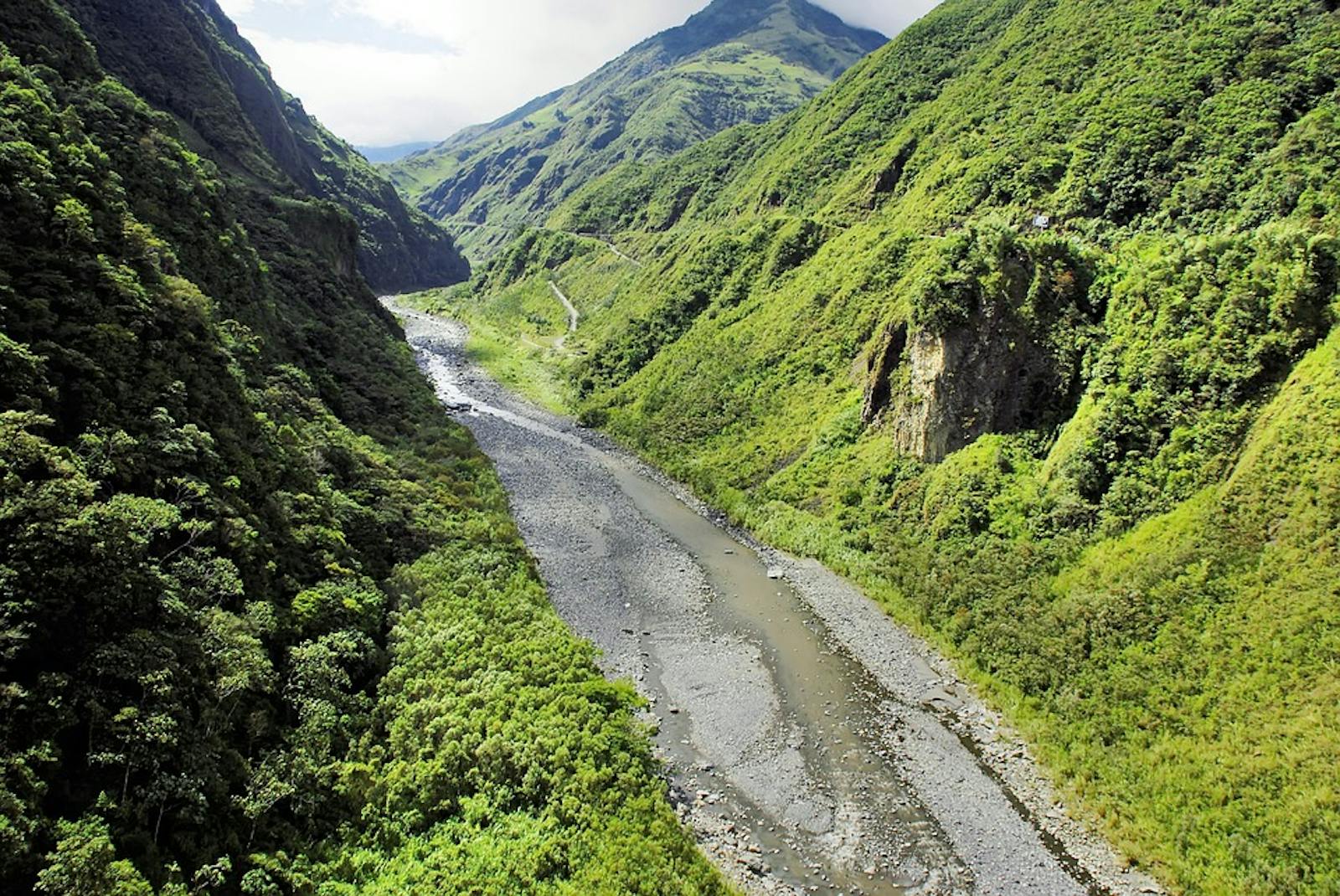Western Ecuador Moist Forests
The ecoregion’s land area is provided in units of 1,000 hectares. The conservation target is the Global Safety Net (GSN1) area for the given ecoregion. The protection level indicates the percentage of the GSN goal that is currently protected on a scale of 0-10. N/A means data is not available at this time.
Bioregion: Ecuadorean Dry Coastal Forests & Flooded Grasslands (NT10)
Realm: Southern America
Ecoregion Size (1000 ha):
3,418
Ecoregion ID:
516
Conservation Target:
57%
Protection Level:
1
States: Ecuador, Colombia
The critically endangered Rio Pescado stubfoot toad is endemic to the Western Ecuador Moist Forest ecoregion. This nocturnal frog inhabits moist lowland forest and breed along streams and riverbanks. Males are territorial along the creek bank, often guarding several females. Currently, none of its highly restricted range is covered in any protected area. Like many other similar species in the genus Atelopus, these frogs are also extremely susceptible to the chytrid fungus which has caused a global decline in amphibians. Scientists are racing to find a cure to the fungus as the disease continues to spread.

The flagship species of the Western Ecuador Moist Forests ecoregion is the Rio Pescado stubfoot toad. Image credit: Courtesy of Luis Coloma, Conservation International
Located in southwestern Colombia and western Ecuador, the ecoregion boundaries extend from the Patia River in the north then through the provinces of Manabí and Guayas to the south where it touches the Golfo de Guayaquil, ending at the foothills of the Andes Mountains in the east. These moist forests largely lack a distinct dry season with annual rainfall averaging 7,000 mm in the north and 2,000 mm in the south.
Historically, the ecoregion was influenced by volcanic activity resulting in fertile soils, particularly in the north with lapilli and ash deposits. The vegetation is dominated by trees with a dense canopy of over 30 m high, rich in lianas (woody climbing plants) and epiphytes (plants growing on another). These trees include crabwood, Virola dixonii, Brosimum utile, and Guarea kunthiana. Characteristic subcanopy palms include Iriartea deltoidea and Wettinia quinarian. In the moist forests 1,250 plant species have been recorded, including 43 endemics.

Violet crowned Woodnymph. Image credit: Joseph C Boone, Creative Commons
A high number of endemic species that are specific to small areas, particularly in narrow strips and on isolated mountain ridges, helps characterize these forests. These natural fragmentations among other factors encourage dynamic speciation by creating a host of specialized niches, and lead to a high biodiversity in the ecoregion. In recent years 5 new mammal and 122 orchid species were found.
In the north the endemic Humiriastrum procerum tree occurs but is decreasing in number due to its popularity as a building material. This ecoregion is part of a bioregion noted for some of the highest avian endemism in the world, with over 650 bird species utilizing the area. Some larger species have nearly been extirpated from fragmentation and hunting pressures in the ecoregion, including harpy eagle, great tinamou, crested guan, great curassow, and the endangered great green macaws.

American crocodile in water. Image credit: Creative Commons
Between 1960 and 1980 there was accelerated construction of highways and oil exploration in the region, leaving only 4.4% of the forests intact in western Ecuador. This remnant forest is protected by the Cotacachi-Cayapas government reserve and Machalilla National Park. Other institutions or private organizations collaborate in management, protection, and research, among them the Río Palenque Scientific Station.
The major threats to these ecosystems are the effects associated with banana plantations and extraction of palm oil and rubber. Often these products are farmed in unsustainable ways, replacing large tracts of habitat with a monoculture unsuitable for native species. The moist forests of western Ecuador constitute one of the most threatened types of habitat on the planet. In addition, the construction of roadways facilitates human impact and settlement into previously untouched areas, leading to conversion of forest into pastureland.
The priority conservation actions for the next decade will be to: 1) transition the palm oil and banana plantations to a sustainable model; 2) lead educational workshops for natural resource integration into agriculture and cattle farming; and 3) promote restoration in lost forest habitats.
Citations
1. Carrera, P. Jiménez, P. Viteri, X. 2019. Northern South America: Northwestern Ecuador and southwestern Colombia https://www.worldwildlife.org/ecoregions/nt0178 Accessed May 23, 2019.
2. Dodson C.A. and A. Gentry. 1993. Extinción biológica en el Ecuador occidental, In P.A Mena and L. Suárez (editors), La Investigación para la Conservación de la Diversidad Biológica en el Ecuador. EcoCiencia. Quito.
3. Suárez L. and P. Silva. 1996. en Conservation Atlas of Tropical Forests. The Americas. (27 - Ecuador). Pages 260-269.



